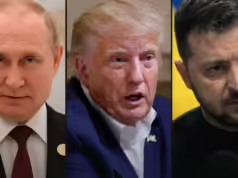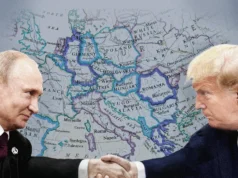The United States levied an extra 26% import tax on India. Its rivals, including China, Vietnam, and Thailand, were subject to heavy tariffs. China, Hong Kong, and Macau are not covered by this tariff moratorium.
According to White House executive orders, the United States has announced that it will suspend new tariffs on India for ninety days, until July 9 of this year. On April 2, US President Donald Trump imposed severe charges on nations like India and universal duties on over 60 nations that sell goods to the US.
In the largest economy in the world, the move may affect sales of steel and shrimp. Its goals were to increase domestic production and reduce its trade deficit. The United States levied an extra 26% import tax on India. China, Vietnam, and Thailand were among the competitors that faced significant tariffs. Hong Kong, Macau, and other parts of China are exempt from the ban.
White House order on suspension of US tariffs till July 9
Enforcement of the second paragraph of section 3(a) of Executive Order 14257 is suspended until 12:01 a.m. eastern daylight time on July 9, 2025, with effect from April 10, 2025, on or after 12:01 a.m. eastern daylight time for goods entered for consumption or withdrawn from warehouse for consumption, the order stated.
The application of reciprocal tariffs is mentioned in the second paragraph of Section 3(a) of the executive order that was issued on April 2. It contains the tariff rates for various nations listed in Annex 1. The 10% baseline tariff that is now in effect for the nations will not be altered, though.
More than 75 other international trading partners, including those listed in Annex I to Executive Order 14257, have approached the United States to address the lack of trade reciprocity in our economic relationships and the ensuing national and economic security concerns since I (US President Trump) signed Executive Order 14257. This is in contrast to the PRC’s actions.
US, India negotiating bilateral trade agreement
Trump reduced his duties on most countries for 90 days after a worldwide market disaster, but he increased the tax rate on Chinese goods to 125%. Commerce and Industry Minister Piyush Goyal reassured exporters that India is working on the “right mix and right balance” in its proposed trade agreement with the United States during a meeting with industry and exporters on April 9.
According to him, the Indian team is working with “speed” but not “undue haste” to guarantee the best result for the nation. In order to more than double their current commerce, which is currently valued at around USD 191 billion, to USD 500 billion by 2023, the two nations are negotiating a bilateral trade agreement (BTA). By the fall (September–October) of this year, they hope to have the first phase finished.
About 18% of India’s total goods exports, 6.22% of its imports, and 10.73% of its bilateral trade are with the US. China, on the other hand, accounts for a startling 15% of imports and only about 4% of exports.











